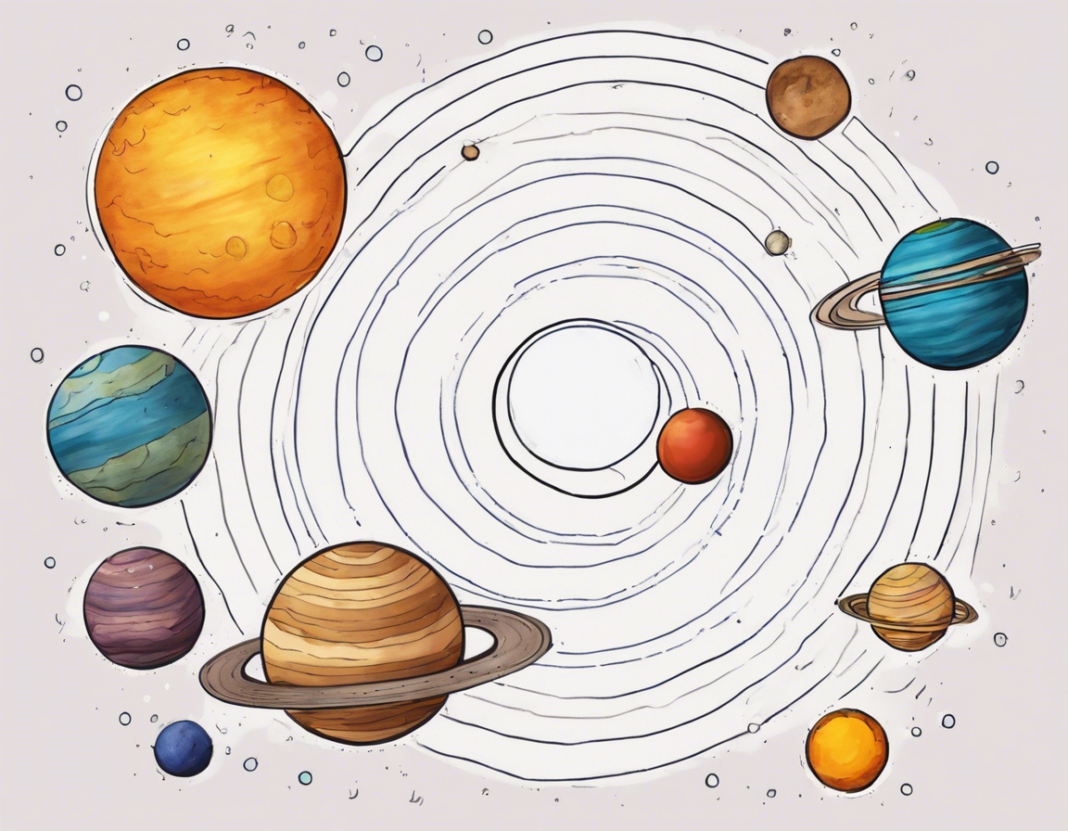Our solar system is a vast and wondrous place, with its collection of planets, moons, asteroids, and comets orbiting the Sun. It is a subject that has captivated scientists, artists, and enthusiasts for centuries, inspiring a plethora of illustrations that aim to capture the beauty and diversity of our cosmic neighborhood.
In this article, we will delve into the world of illustrations that depict our solar system, exploring the different styles, techniques, and purposes behind these visual representations. From scientific diagrams to imaginative artworks, these illustrations not only educate us about the planets and their features but also ignite our sense of wonder and curiosity about the universe beyond our own planet.
The Art of Solar System Illustrations
Scientific Illustrations
One of the primary purposes of solar system illustrations is to convey scientific information in a clear and visually appealing manner. Scientific illustrations often focus on accuracy and detail, providing viewers with valuable insights into the various celestial bodies that make up our solar system. These illustrations can range from labeled diagrams of the planets to cross-sections of their interiors, offering a glimpse into the geological and atmospheric characteristics of each world.
Astronomical Art
In addition to scientific illustrations, many artists take a more creative approach to depicting the solar system through astronomical art. These artworks often prioritize aesthetic appeal over strict accuracy, allowing for artistic interpretation and imagination to take center stage. From colorful depictions of alien landscapes to surreal visions of cosmic phenomena, astronomical art invites viewers to explore the wonders of the universe through the artist’s unique perspective.
Educational Tools
Solar system illustrations also serve as valuable educational tools, helping students of all ages learn about the planets and their properties in a visually engaging way. Whether in textbooks, museum exhibits, or online resources, these illustrations play a crucial role in making complex scientific concepts more accessible and understandable to a wide audience. By combining informative content with captivating visuals, educational illustrations can spark a lifelong interest in astronomy and space exploration.
Styles and Techniques
Solar system illustrations come in a variety of styles and techniques, each offering a different perspective on our cosmic neighborhood. Some common approaches include:
-
Realistic Renderings: These illustrations aim to depict the planets and other celestial bodies as accurately as possible, often based on scientific data and observations from spacecraft missions.
-
Surreal Art: Artists may take creative liberties with their interpretations, imagining fantastical landscapes and otherworldly scenes that push the boundaries of reality.
-
Infographics: Infographics combine text and visuals to present information in a clear and concise format, making complex topics more digestible for the general audience.
-
Digital Art: With advancements in technology, many illustrators now use digital tools to create stunning renditions of the solar system, adding a new dimension of realism and detail to their work.
Famous Solar System Illustrations
Over the years, numerous artists and illustrators have produced iconic works that continue to inspire and inform audiences about our solar system. Some notable examples include:
-
“The Grand Tour” by NASA: This series of illustrations showcases the Voyager spacecraft’s historic journey through the outer planets, capturing the beauty and diversity of Jupiter, Saturn, Uranus, and Neptune.
-
SpaceX Mars Colonization Vision: Elon Musk’s vision of establishing a colony on Mars has been visualized through a series of illustrations that depict human habitats and infrastructure on the Red Planet.
-
Vintage Space Posters: Inspired by retro travel posters, artists have created a collection of colorful illustrations that promote space exploration and tourism to destinations like Mars, the Moon, and beyond.
Bringing the Solar System to Life
Whether you are a science enthusiast, an artist, or simply someone with a sense of wonder about the universe, solar system illustrations offer a unique window into the beauty and complexity of our cosmic neighborhood. By exploring the diverse styles, techniques, and purposes behind these visual representations, we can deepen our understanding of the planets, moons, and asteroids that populate our solar system and fuel our imagination for generations to come.
Frequently Asked Questions (FAQs)
1. Why are solar system illustrations important?
Solar system illustrations help us visualize and understand the vastness and diversity of our cosmic neighborhood in a visually engaging way, making complex scientific concepts more accessible to a wide audience.
2. Can anyone create solar system illustrations, or is it a specialized skill?
While creating detailed scientific illustrations may require specialized knowledge, anyone with a passion for art and astronomy can explore the world of solar system illustrations through creative and imaginative means.
3. Where can I find high-quality solar system illustrations for educational purposes?
There are many online resources, including NASA’s website, educational platforms, and science museums, where you can find a wide range of solar system illustrations for educational purposes.
4. Are there any famous artists known for their solar system illustrations?
Several artists, such as Chesley Bonestell, Ron Miller, and Lynette Cook, are renowned for their contributions to astronomical art and have created stunning illustrations of the solar system.
5. How can I use solar system illustrations in my own creative projects or presentations?
You can incorporate solar system illustrations into presentations, school projects, artwork, or even personal studies to enhance visual appeal and convey complex information in a captivating manner.






